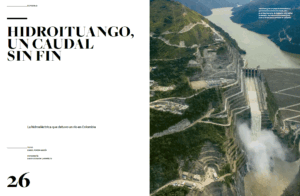Every year, more than one million people cross the forests of Doñana National Park on a pilgrimage that lasts a little more than a week, sleeping surrounded by what may be, the last virgin natural setting in all of Europe. Typical clothing, and singing and dancing to flamenco music, announce every year that ‘El Camino’ has begun in the main natural sanctuary in Spain. The final destination is a village in which the roads are dust and dirt, and looks like still anchored to past centuries. Imperturbable, yet part of this background, is the marsh; an ecosystem in which the sea makes its presence in the form of a large body of calm water, and where wild horses live with flamingos and other birds, unaware of the human spectacle that occurs on land.
El Rocío is the largest Catholic pilgrimage in the world. This pilgrimage, done by foot, on horseback, or in unique carriages (called carriolas), congregates ‘rocieros’ from around the world, not only from Andalusia or other parts of Spain. The brotherhood of ‘rocieros’ has multiplied. They arrive to this isolated village, which is part of the neighboring town of Almonte in Huelva, Spain, packed with food and with a carriage holding the ‘simpecado’, a wood-carved image of the Virgin of El Rocío, which usually rests in the hermitage – a place that has been turned into a sanctuary of enormous size and bright white color, and that is the heart of the Village of El Rocío. The Lady of the Marshes, as the devotees also call it, is a wood carved piece that was found, according to the legend, by a shepherd in the fifteenth century, a piece that brings back the religions of the first settlers of the Iberian Peninsula who worshiped the goddess of Phoenician origin, Astarté, associated with water and fertility.
But today, the celebration of the Virgin is a mixture of alcohol consumption, religious songs, and flamenco guitars in a gathering where, La Blanca Paloma (White Dove), the most popular name of this Virgin, is the heart of everything and everyone.
Pentecost is the chosen date. That day, all the pilgrims have already arrived at the village, and at dawn, they surround the hermitage-sanctuary. A fence separates the ‘rocieros’ from the ‘chosen ones’: a group of almonteños who, according to the legend, when the holy spirit announces itself, jump to grab the image and carry it up high among the excited crowd in the middle of the night. Jumping the fence is the moment of catharsis for ‘El Camino’, the moment when the emotion of the devotees invades the masses. Everyone tries to get closer and closer, those fortunate enough to make it, get to touch the golden robe of the Virgin.
Ricardo Gamaza. Environmental journalist and documentary director
[tg_grid_gallery gallery_id=»6325″ layout=»contain» columns=»3″]


